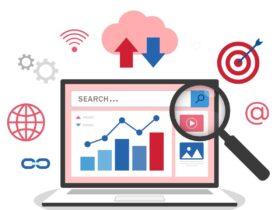In today’s technology-driven world, businesses heavily rely on extensive data to inform their day-to-day operations and decision-making processes. With the ever-expanding size and complexity of data environments within enterprises, maintaining the accuracy and completeness of data has become increasingly challenging. This challenge is addressed through the adoption of data observability – a process designed to monitor the health and reliability of data, providing insights to identify and resolve potential issues before they impact the entire organization.
Understanding Data Observability
Data observability involves keeping a close eye on the performance and health of data across the entire IT infrastructure. The primary goal is to ensure that valuable data remains accurate, complete, and secure, thereby eliminating any instances of data downtime. The framework for data observability comprises five key pillars: recency, volume, distribution, schema, and lineage.
- Recency: Also known as “freshness,” this pillar focuses on confirming the up-to-dateness of the data and detecting any unusual temporal gaps in data tables to prevent timeliness issues.
- Volume: Ensures that the quantity of data entering the database meets expected thresholds, guaranteeing the completeness of data sets.
- Distribution: Measures the quality of data at the field level, confirming if data values fall within expected ranges and identifying unexpected fluctuations indicative of data issues.
- Schema: Involves monitoring and auditing changes to data tables and organization to detect signs of broken data, as changes in the structure of source data often lead to data downtime.
- Lineage: Collects metadata to provide a comprehensive picture of the organization’s data landscape, including upstream and downstream sources and teams accessing the data at different stages, facilitating effective troubleshooting.
Benefits of Data Observability
Implementing data observability offers several advantages to organizations:
- Facilitates Root Cause Analysis: Enables the quick identification of issues in data sets across the IT infrastructure, increasing the chances of discovering new issues early on.
- Faster Mean Time to Detection and Resolution: Actively monitors a wide range of outputs, allowing data teams to triage and debug systems efficiently, resulting in quicker mean time to detection and resolution.
- Automates Security Management: Provides real-time visibility into security posture and facilitates the automation of parts of the triage process for instant detection of data health issues.
Challenges in Implementing Data Observability
Organizations may face challenges in implementing data observability due to:
- Data Silos: Difficulty in comprehending interdependencies among applications, digital channels, and various clouds due to multiple monitoring tools and disparate data sources.
- Integration with Entire Data Ecosystem: Connecting all systems to a data observability platform can be challenging for some organizations.
- Manual Instrumentation and Configuration: Standardizing telemetry data from diverse sources may require manual effort.
Data Observability vs. Data Governance
While data observability focuses on monitoring and ensuring the health of data, data governance is concerned with policies and procedures to regulate data collection, analysis, storage, sharing, and usage. Both are crucial for effective data management.
Data Observability vs. Data Quality
While data quality ensures the completeness and accuracy of data sets, data observability allows organizations to detect and fix issues in the data pipeline efficiently. Both are essential for reliable decision-making.
Choosing the Right Data Observability Tools
Selecting an appropriate data observability platform involves considering compatibility, autonomy, timeliness, sophistication, and other features tailored to an organization’s needs and IT architecture.
Top Data Observability Tools
Several data observability platforms, including Monte Carlo Data, Bigeye, Accel Data, Databand, and Datafold, offer features such as comprehensive observability capabilities, automated alerting, data catalogs, cross-stack visibility, and proactive capabilities for identifying and resolving data issues.
Closing Thoughts
Data observability is crucial for modernizing data management practices, improving data quality, and ensuring the agility of data engineering teams. Without it, organizations risk relying on incomplete or inaccurate data, leading to potential errors in decision-making and wasted resources. Adopting the right data observability tools is essential for organizations seeking to enhance their data management practices in the evolving digital landscape.












